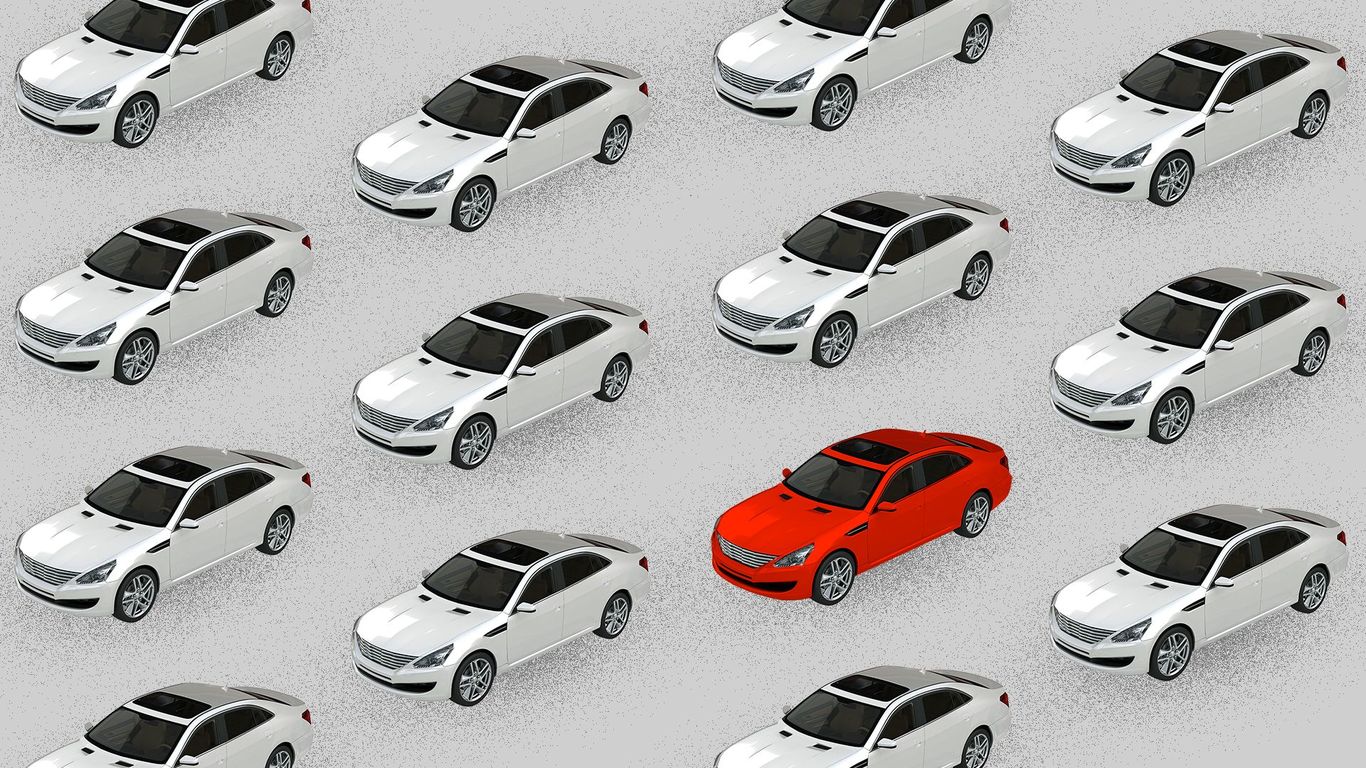
After 13 years without owning a car, I finally got one.
Why it matters: Driving is one of the most direct ways we as individuals benefit from our activities raising Earth’s temperature. It’s also one of the clearest ways we can embrace cleaner technologies.
This is the story of my personal car-buying journey. I’m sharing because I learned a lot and others may have similar goals. I had three goals in mind (read until the end to find out what I got).
The car would have to be:
- Efficient: As clean and efficient as possible.
- Affordable: I don’t want to spend any more money than necessary.
- Versatile: I don’t want to depend on multiple cars. Most electric-car owners almost always own multiple cars.
The big picture: The U.S. transportation sector is America’s biggest source of greenhouse gases. We need systemic change, not undue focus on individual action, to tackle climate change. But exploring how we can cut our own carbon footprints helps because it teaches us about those needed systemic changes.
How it works: I wrote off a fully electric car — for now.
- My Seattle apartment building doesn’t have charging, and although I probably will have access to it when I commute to an office again, I want the guarantee of home charging.
- My family lives 300 miles away in a rural part of Washington state where charging en route — and charging again once I get there — would be difficult.
- I want a car with all-wheel drive because of snow. The only electric cars currently available with this are Teslas, but the most affordable option costs well north of $40,000.
The intrigue: I then began looking at plug-hybrids, which can be plugged into an electricity source, allowing drivers to go short distances on a battery (i.e., city errands) with a gasoline engine for longer trips.
- Subaru with its Crosstrek and Toyota with its Prius and RAV4 have appealing plug-in options.
But, but, but: A messy combination of state policies and automaker preferences are roadblocks.
- Subaru is not currently selling its plug-in Crosstrek in Washington state, per a corporate spokesman. The company is prioritizing selling it in the roughly dozen states that have adopted California’s zero-emission mandate.
- Representatives at Seattle-area Toyota dealerships told me they’re not receiving plug-in versions of the RAV4 and Prius because they’re so popular, and because Toyota was prioritizing selling them in other states, namely California. A Toyota spokeswoman said they’re allocating those models “efficiently and strategically as possible” to meet its regulatory requirements with state-level zero-emission mandates.
- Although Washington State passed legislation last year adopting this mandate, it won’t go into effect until 2025.
- I could have gone to Portland, Ore., 180 miles away to buy a Crosstrek plug-in hybrid, but then it couldn’t be serviced in Seattle, per a Subaru spokesman.
That left conventional hybrids, which use a gasoline engine and regenerative braking to power the vehicle’s battery. I narrowed the choices to two: Prius and RAV4.
- They cost between $25,000 and $35,000 and get up to 50 and 40 miles to the gallon, respectively. Hybrids don’t get much attention in our society’s saturated debate about electric cars, but they should.
- They emit about 25% fewer greenhouse gases compared to their fully gasoline counterparts, according to multiple studies. Fully electric cars emit close to half as much greenhouse gases, though that can fluctuate depending on the cleanliness of the electricity source.
- More than 5% of U.S. auto sales market in the first quarter of 2021 were hybrids, compared to less than 2.5% for fully electric cars, according to Cox Automotive.
"Beyond substantial sales of electric vehicles, hybrids will also be necessary to meet CO2 emissions rules in practically all major automotive markets globally,” says Nikolas Soulopoulos, an electric vehicle analyst at BloombergNEF.
- “They offer a distinctive efficiency advantage over non-hybridized [internal combustion engines], with relatively moderate additional costs.”
My final choice is anticlimactic (and the butt of an Elon Musk joke). I settled on a Prius, with a price tag of about $25,000. Newer models come in all-wheel drive.
The bottom line: Our world needs to dramatically shift to electric cars as soon as possible, climate experts say. Or, even better, ditch cars altogether.
- In the International Energy Agency’s report on reaching net-zero emissions by 2050, the influential intergovernmental group recommended that nearly 50% of households by then should own zero vehicles, instead relying more on car-sharing, public transit and biking.
What’s next: Auto makers are promising more affordability and versatility in all-electric cars in the coming few years. With that in mind, I am leasing my Prius and plan to return it in in three years to buy a fully electric car (or, better yet, no car at all).
Go deeper:
Editor's note: Amy Harder is vice president of publishing at Breakthrough Energy, a network of investment vehicles, philanthropic programs, policy advocacy, and other activities committed to scaling the technologies needed to reach net-zero emissions by 2050. She is launching a new journalism initiative there. Previously full time at Axios, Amy is now writing her Harder Line column as an outside contributor.
"car" - Google News
June 07, 2021 at 04:00PM
https://ift.tt/2TIwapf
An energy reporter’s quest for a clean, affordable and versatile car - Axios
"car" - Google News
https://ift.tt/2SUDZWE
https://ift.tt/3aT1Mvb
Bagikan Berita Ini















0 Response to "An energy reporter’s quest for a clean, affordable and versatile car - Axios"
Post a Comment